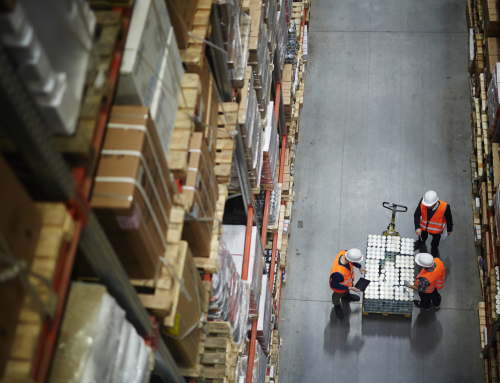With vacancy rates at historic lows, on-demand warehousing adds new variable to the warehouse market.
Is your search for warehouse space turning into a challenge? Are you concerned about the rising price per square foot as competition on the warehouse market toughens?
The Warehowz infographic brings good news. While vacant warehouse space is indeed at a historic low, according to JLL, the true occupancy in many warehouses averages 70% to 80%.

This dichotomy in the warehouse market is tailormade for innovation.
Let’s take a closer look at what’s going on in the warehouse market.
At first glance, the current state of the warehouse market may seem to line up challenges for small and medium-sized businesses.
“E-commerce has created demand for a new type of warehouse with different dimensions, locations and capabilities than what most of the existing U.S. supply offers,” David Egan, Global Head of Industrial & Logistics Research at CBRE, tells Supply Chain Dive.
The ferocious growth of e-commerce means that every $1 billion in e-commerce sales necessitates 1.25 million square feet as businesses shift inventory from brick-and-mortar stores to warehouses, according to CBRE. By 2020, e-commerce companies will demand 184 million square feet of warehouse space at the same time as older warehouses often lack features that those same companies need to support growth: automated supply chains, logistics management, and order management.
Even though CBRE notes 183 million square feet of new warehouse space was constructed in 2017 — a near doubling compared to the year before — competition for space that includes high-demand features (such as larger floor space, more load bays, and higher ceilings) will remain fierce for years to come.
So, it’s time for the good news.
Despite the low vacancy rate on the warehouse market, pockets of space remain unused within existing warehouses in the United States — and they add up to a lot. According to a Warehowz analysis and Legg Mason data, there are 4 billion square feet of available space. That is 20 times larger than Amazon’s distribution footprint.
But how does your business gain access to the space?
This is where innovation comes into play. The need for short-term, flexible, and immediate access to space and warehousing services has resulted in the rise of on-demand warehousing companies — like Warehowz — that seek to tie all of this vacant space together through technology platforms and online marketplaces. In 2019 alone, on-demand warehousing companies are on track to raise $60 million to $100 million, showcasing just how large the need is perceived to be.
Let’s say you want to meet increased demand for your products in the Southwest, but your new warehouse space is under construction and it will be one to two years before it’s fully operational. Hiring a 3PL would be another option, but the drawn-out negotiations may cause you to lose out on a valuable market opportunity. You have, after all, calculated the benefits of establishing your business right now. The solution to your growth challenge is on-demand warehousing.
In a recent supply chain brief, Gartner comments: “Economically, on-demand warehouses typically enable users to replace the fixed costs associated with a long-term lease with short-term variable costs, enabling a more agile supply chain that can ramp up and down as demand fluctuates.”
Do you need warehouse space and services now? Warehowz can help.

Read more:



